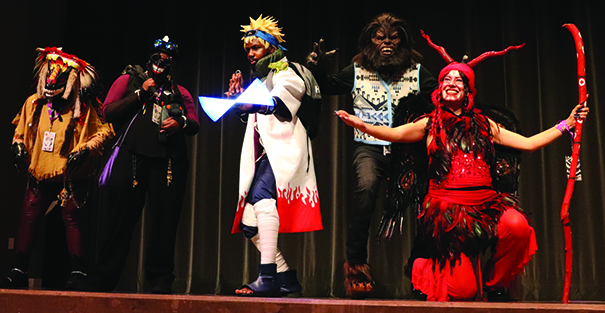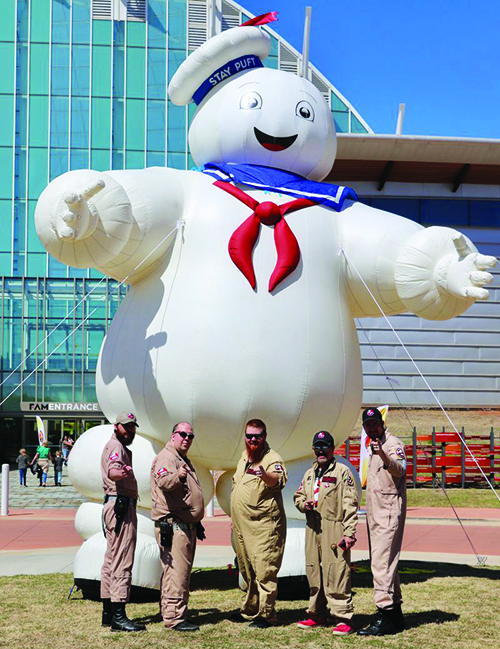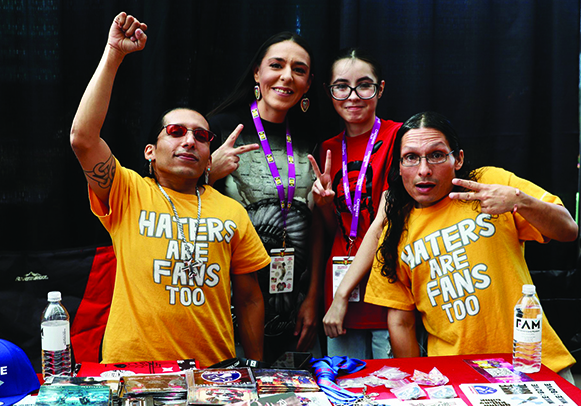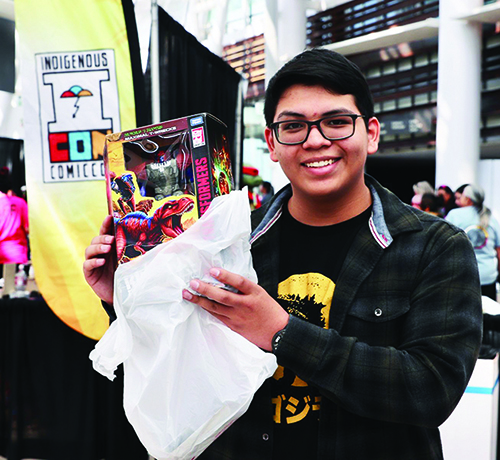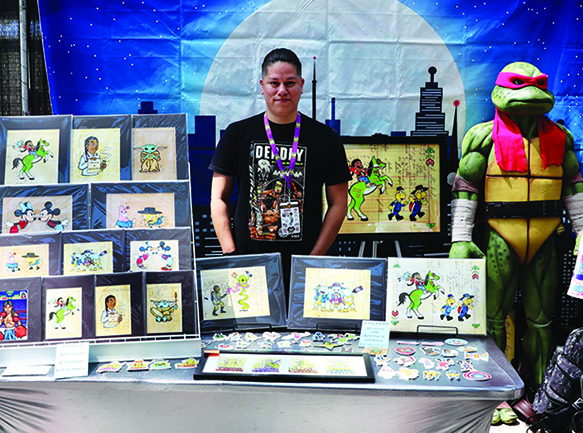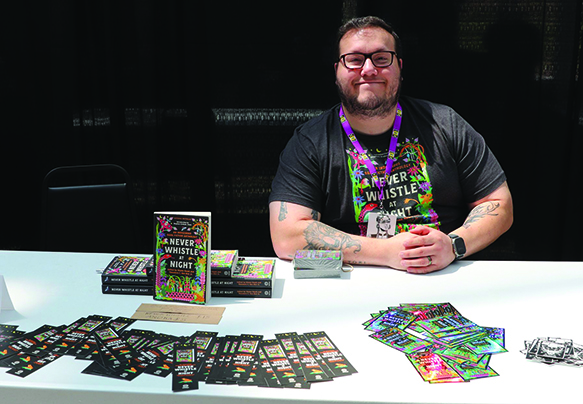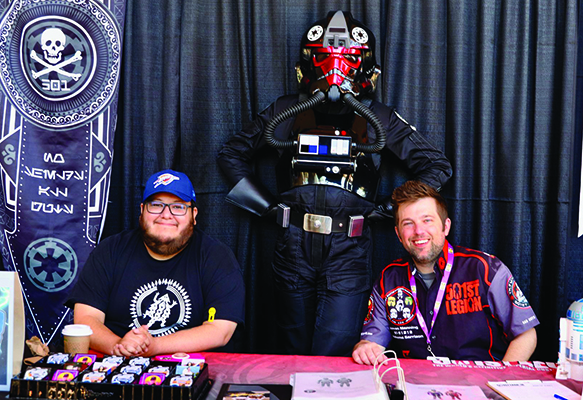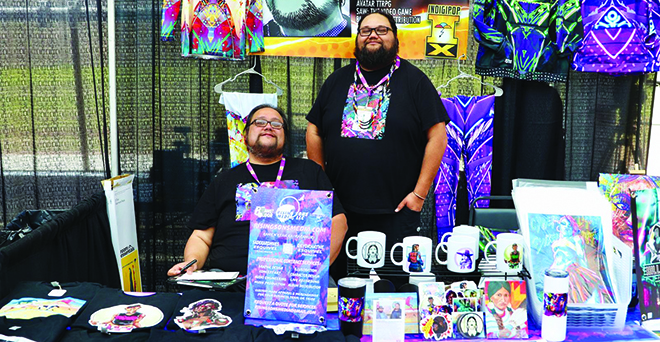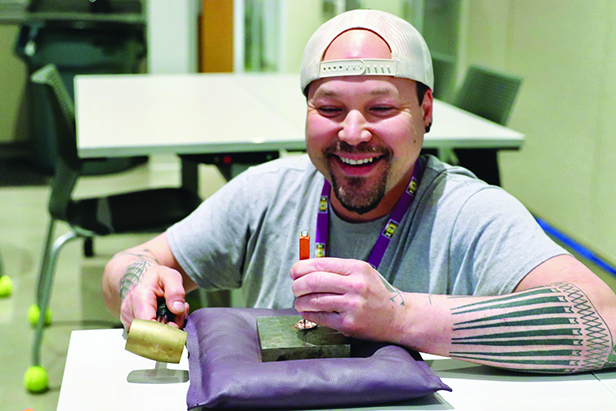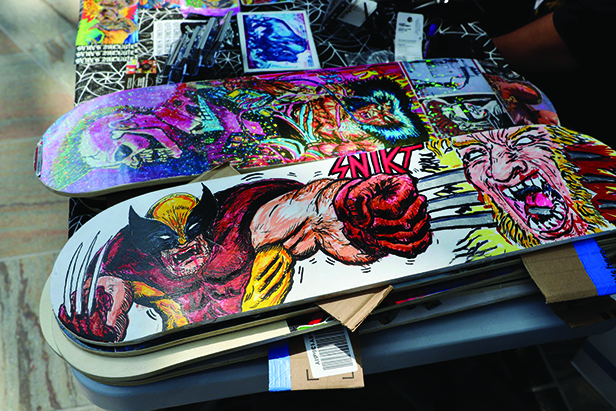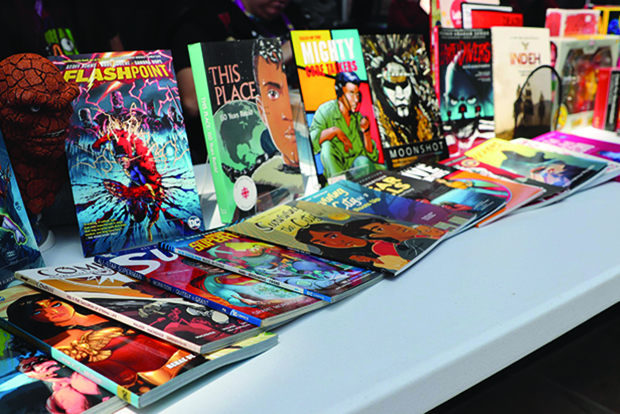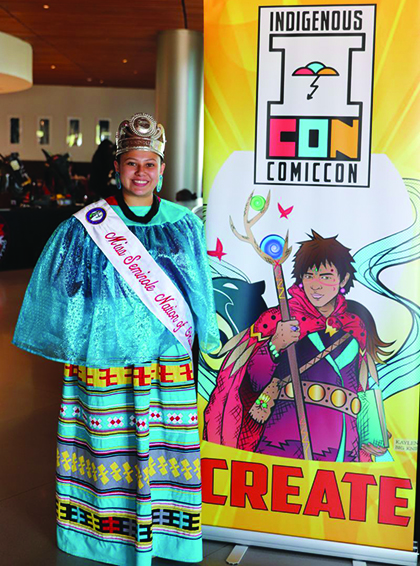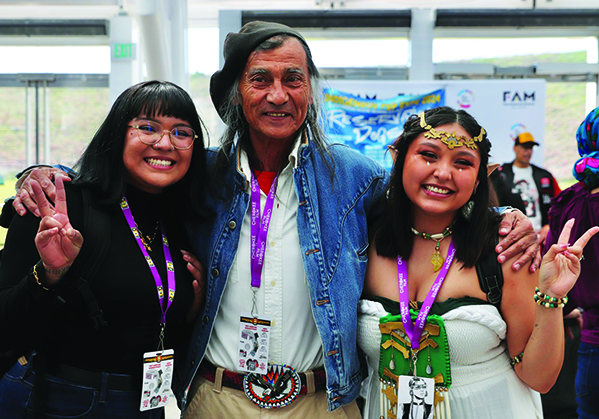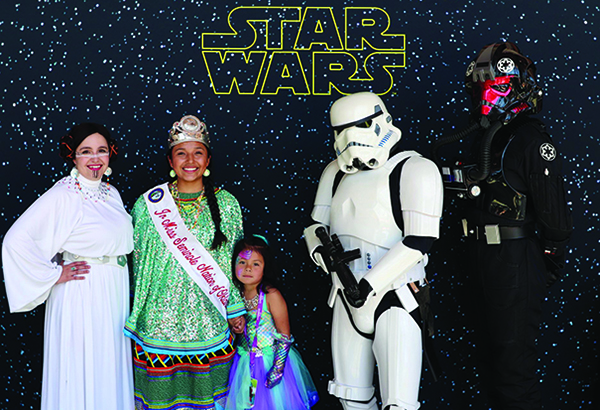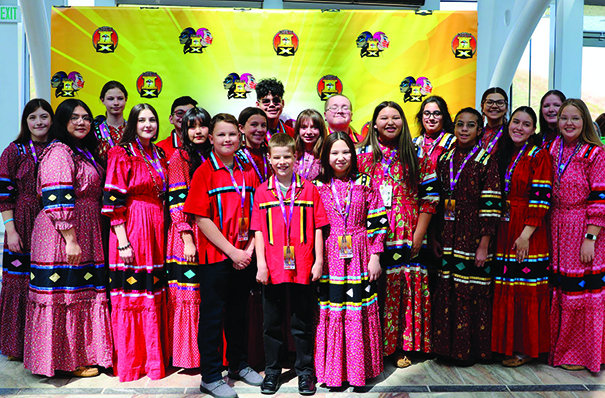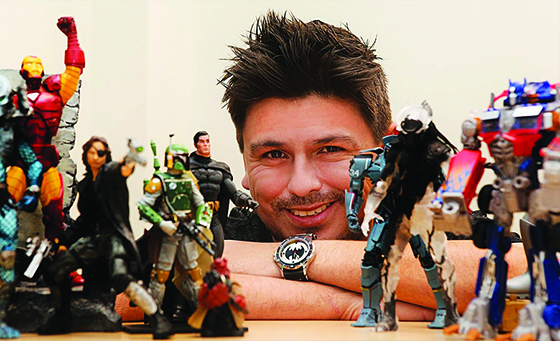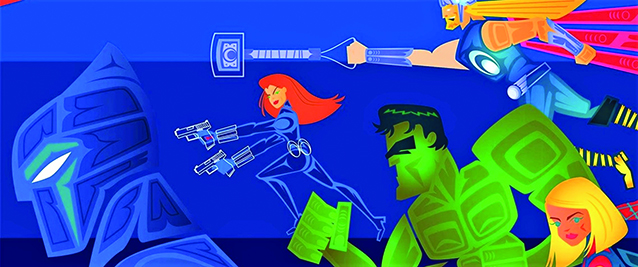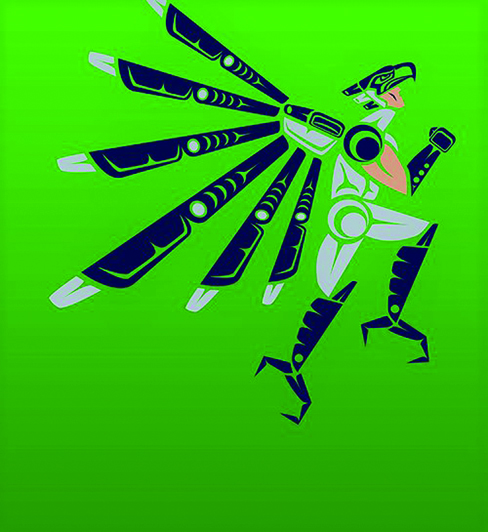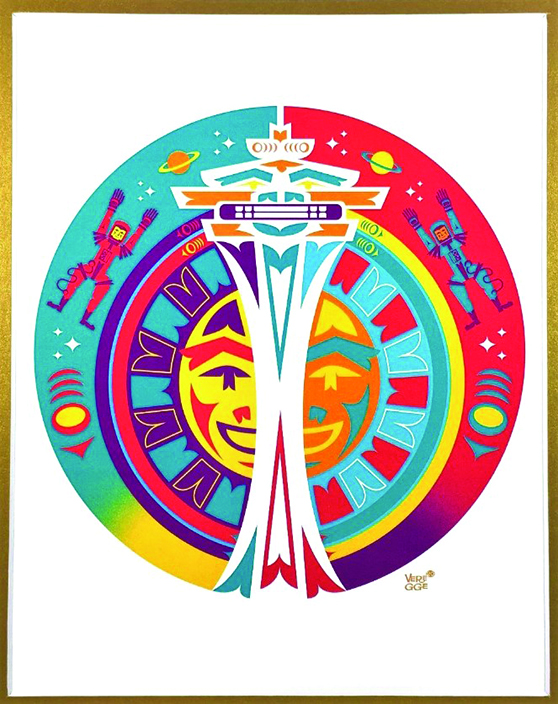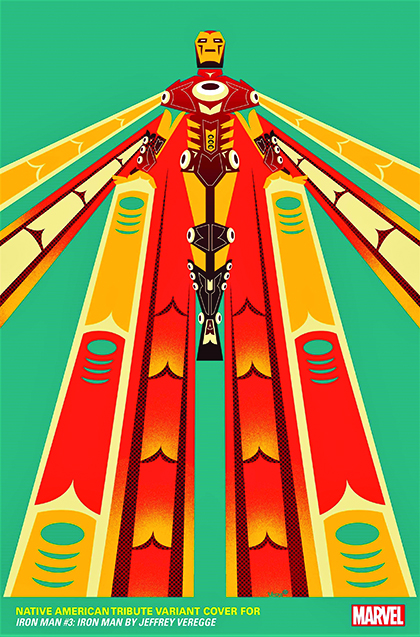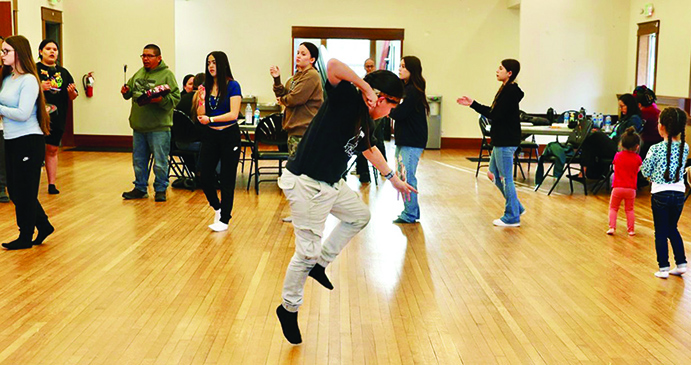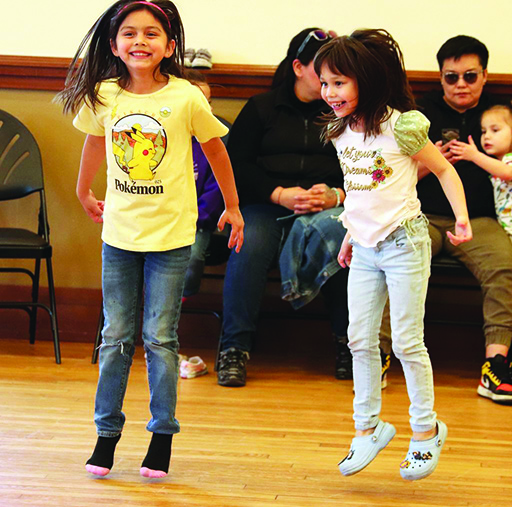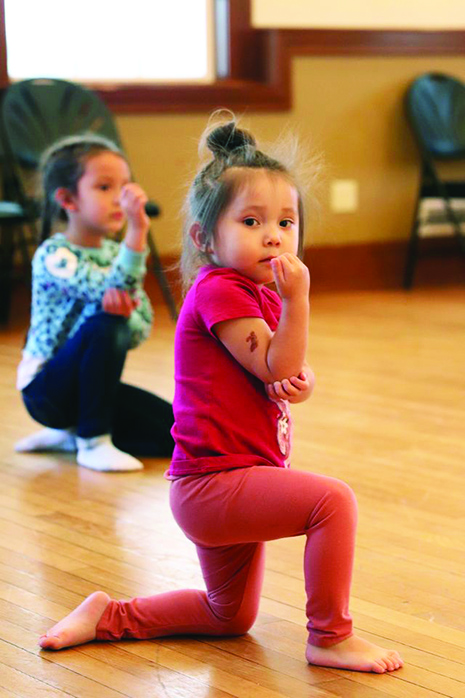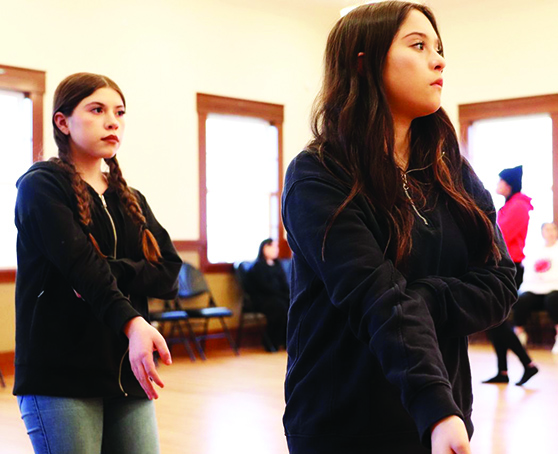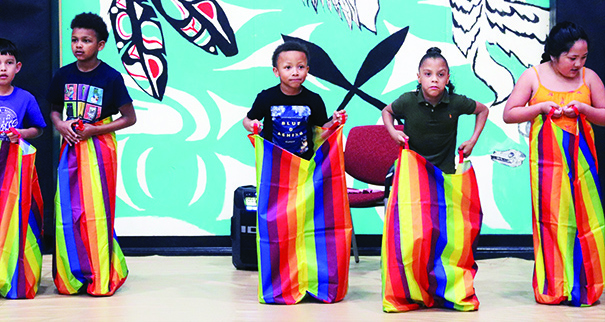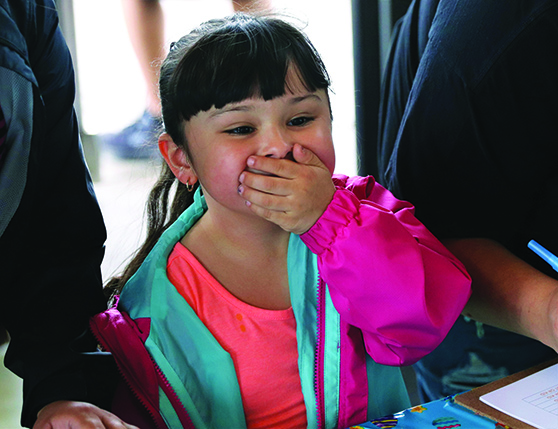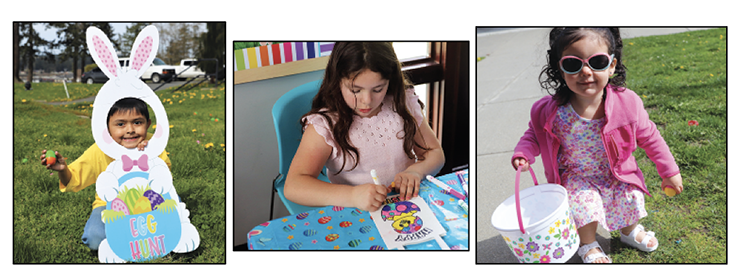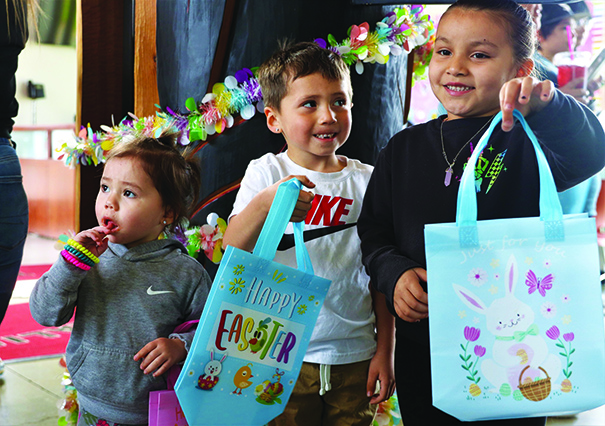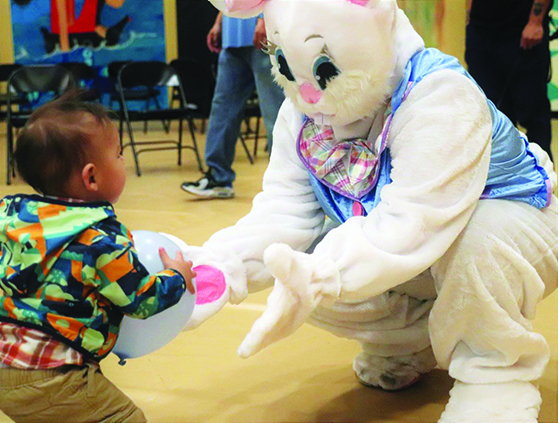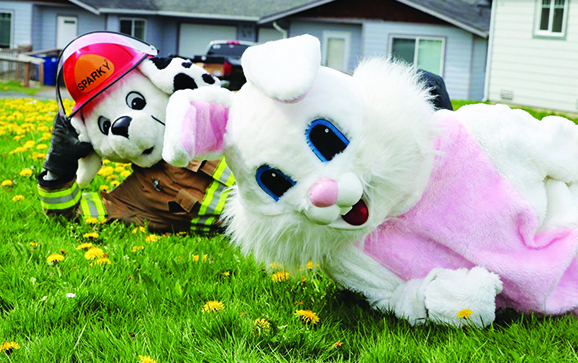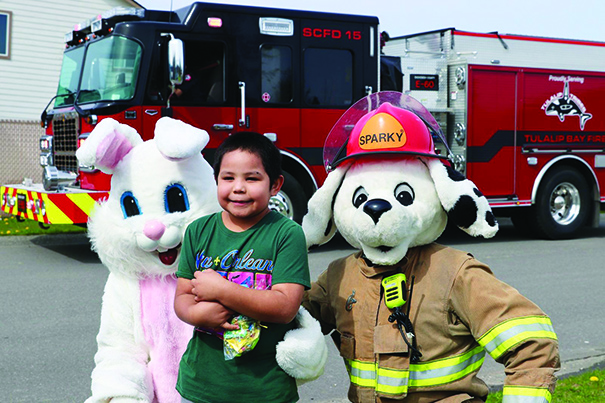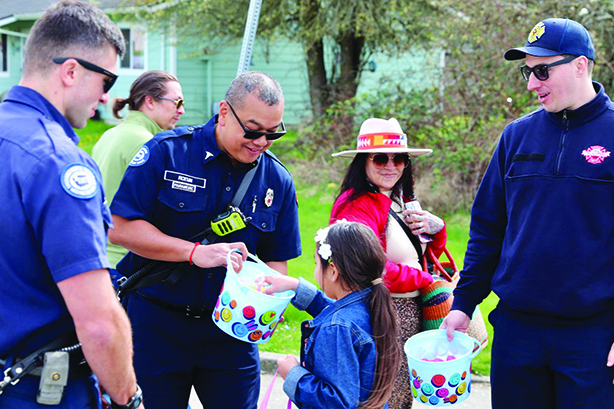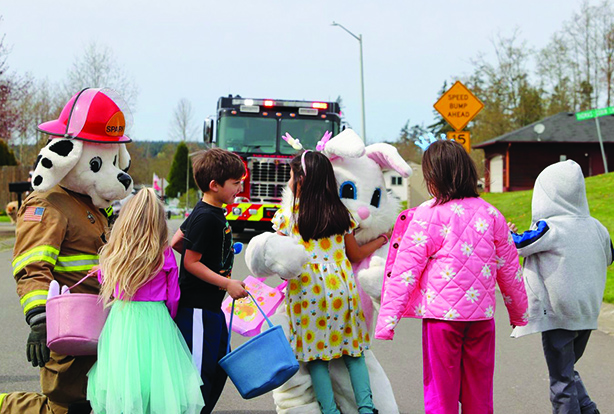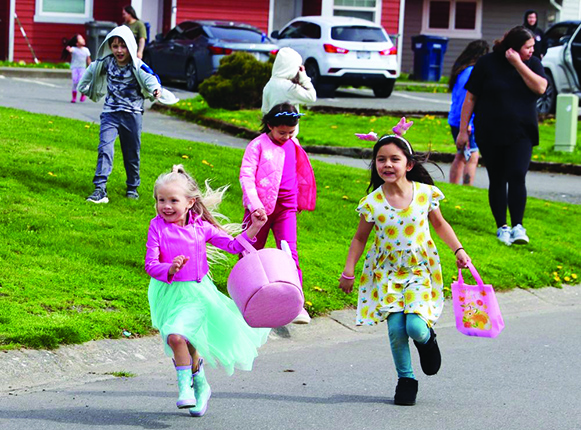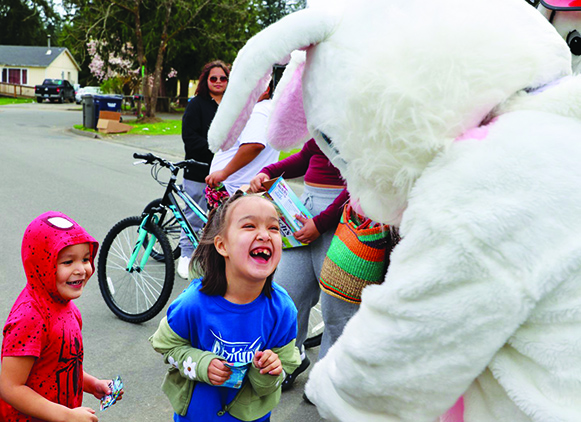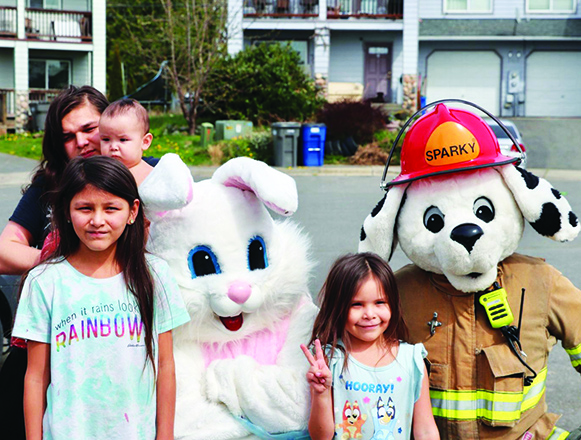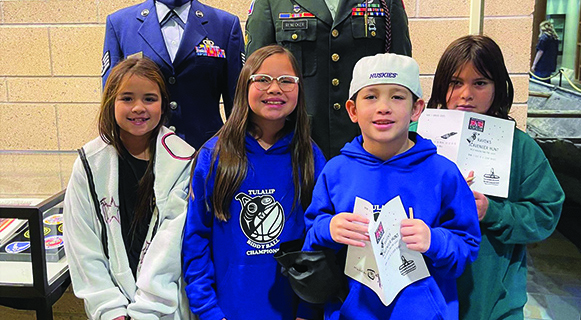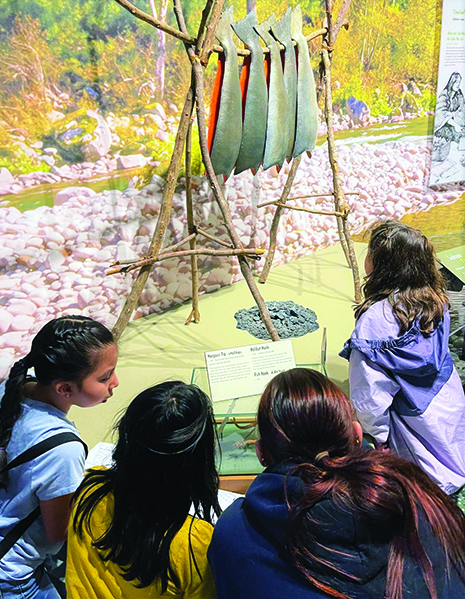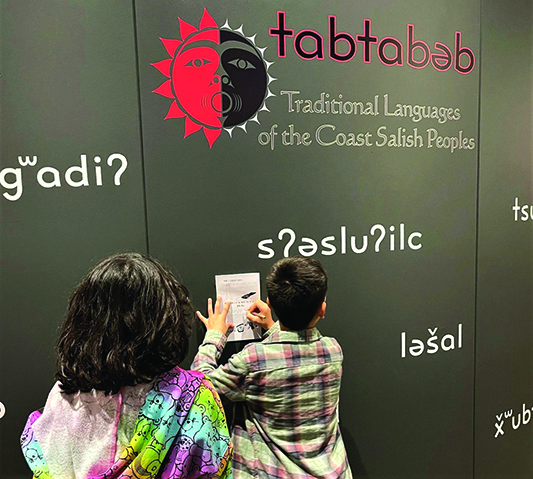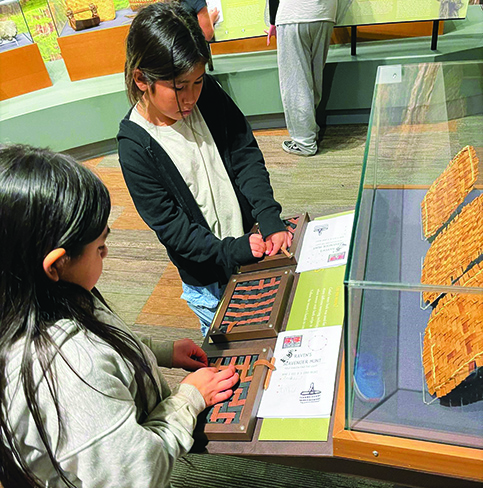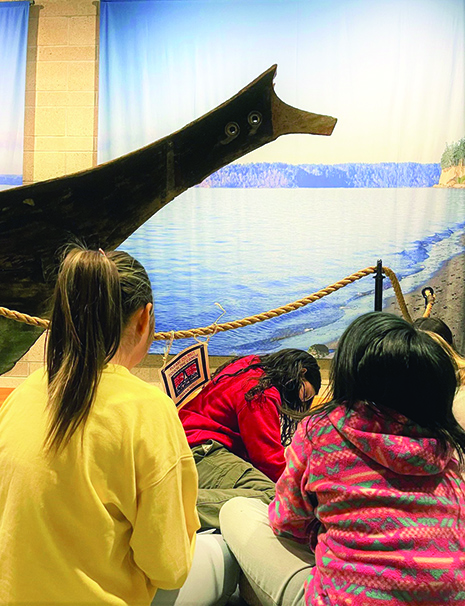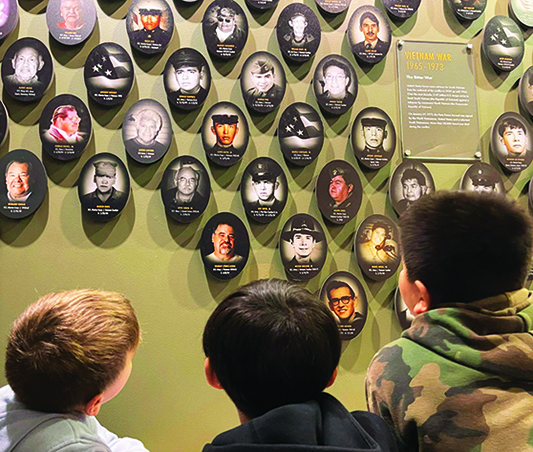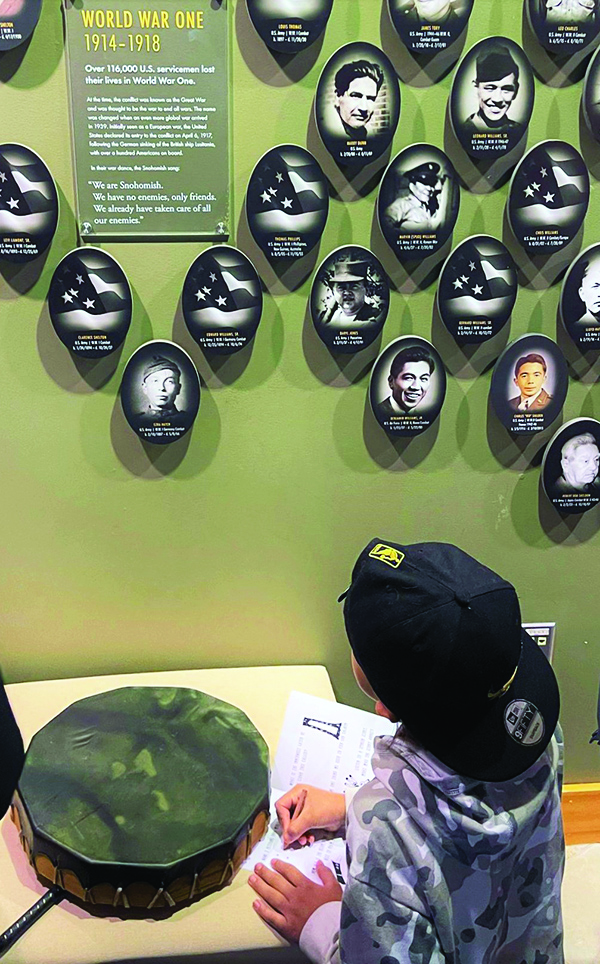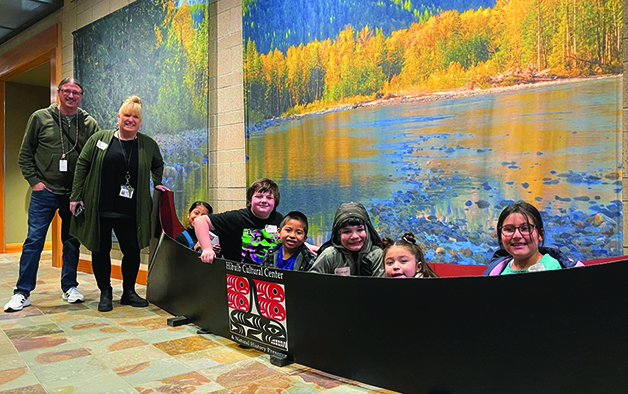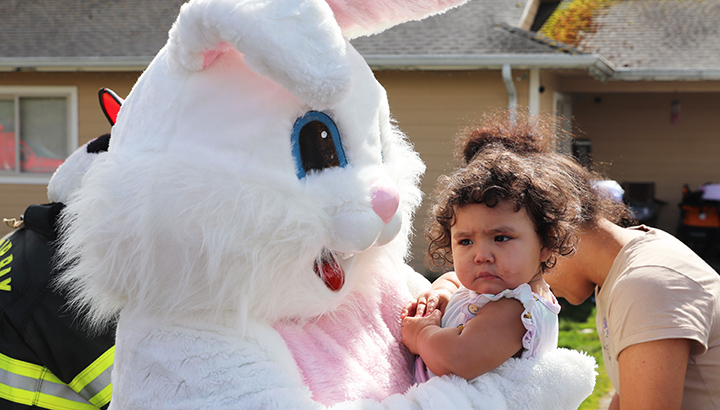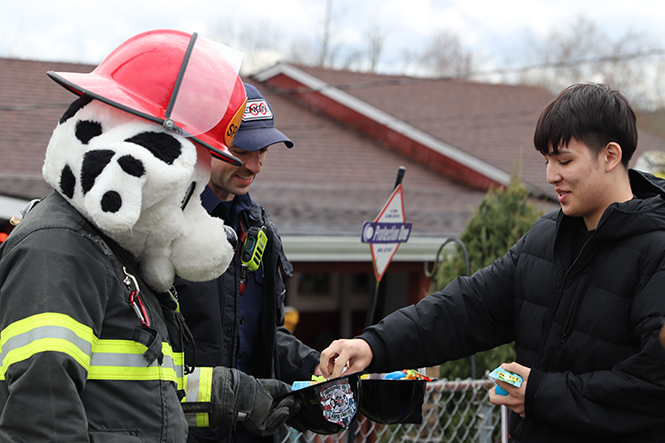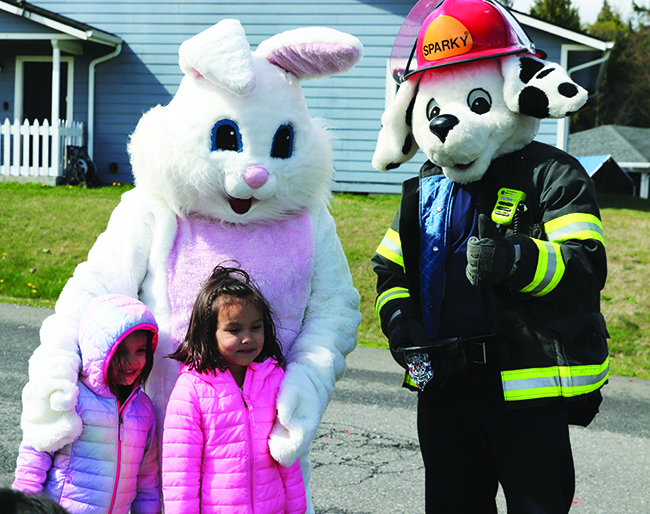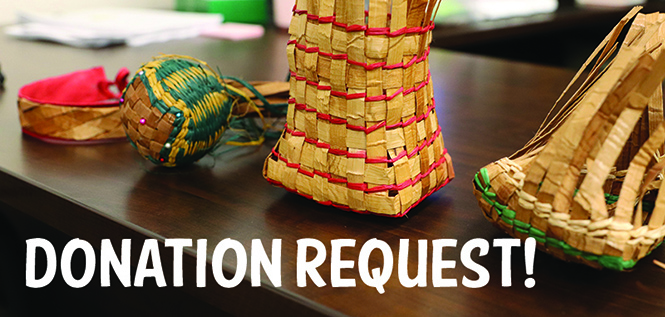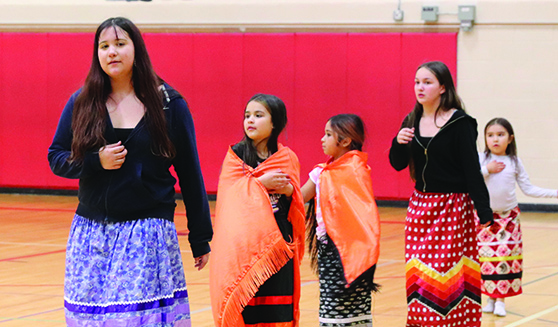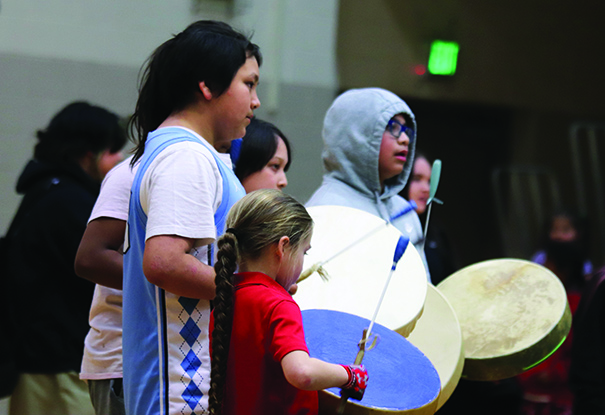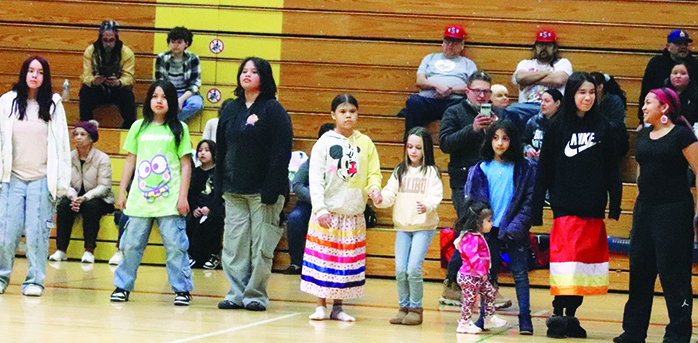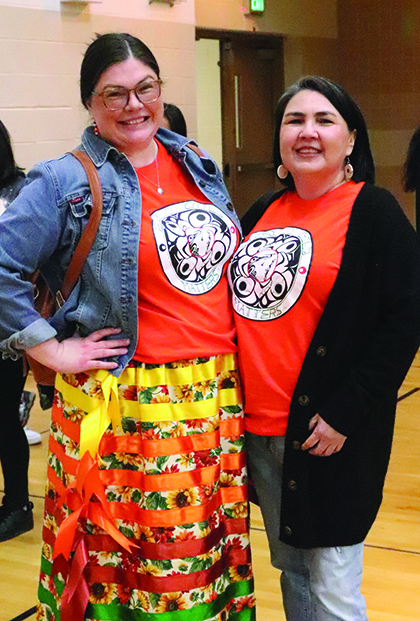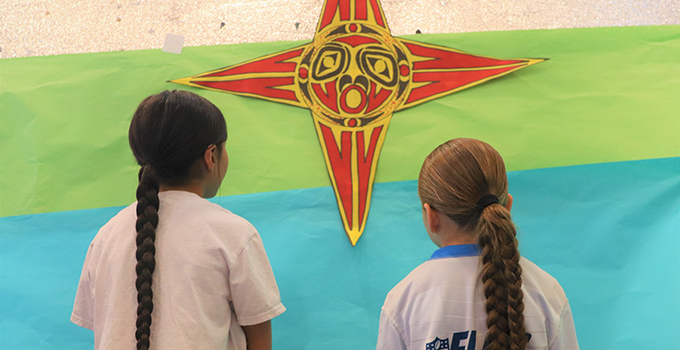
By Micheal Rios, Tulalip News
Creatively inclined Native American students of the Marysville School District wandered through a makeshift art gala that was the Don Hatch Youth Complex on Thursday, April 18 for an always eye-captivating Art Festival. Accompanied by their families, friends and educators, emerging artists ranging from 1st to 12th grade wowed Festival visitors and judges with a variety of imaginative creations that centered around a shared Tulalip culture expressed via a variety of modern-day mediums.
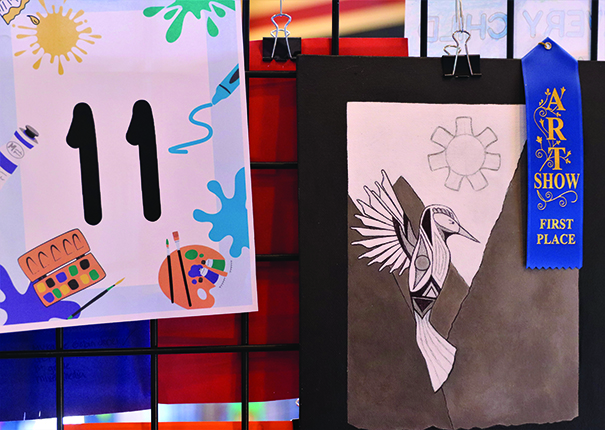
“Our annual Art Festival is an opportunity for each Native student within the District to express themselves in a unique and creative way,” explained positive youth development lead advocate, Deyamonta Diaz. “All the work that goes on behind the scenes to make this event possible, it’s like an all-hands-on-deck effort, is so worth it for our community to witness the pride and joy every student puts into their art.
“Each year our expectations are surpassed because we receive hundreds and hundreds of submissions,” he added. “For me, I look forward to seeing what new ways our kids find to express their Native culture or even developing their own way to retell a traditional story. There’s always something new and eye-catching that they come up with.”
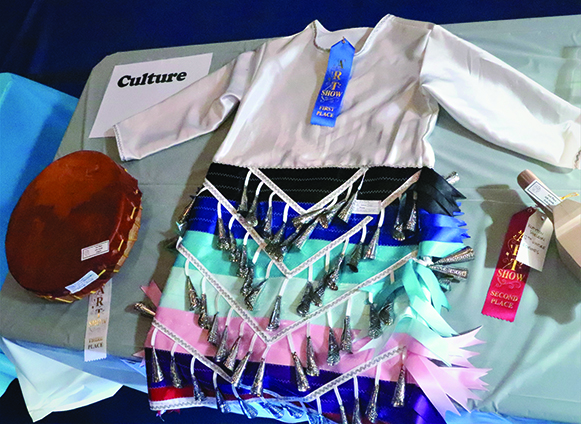
For more than two decades now, Tulalip Tribes has partnered with Marysville School District to dedicate an evening to the art scene embraced by so many emerging artists from Tulalip and the surrounding area within the District. The Art Festival gives fledgling creatives an opportunity to show off their awe-inspiring talents to the community, while also getting a chance to take home a coveted 1st, 2nd or 3rd place ribbon. Plus, all the bragging rights that come with them.
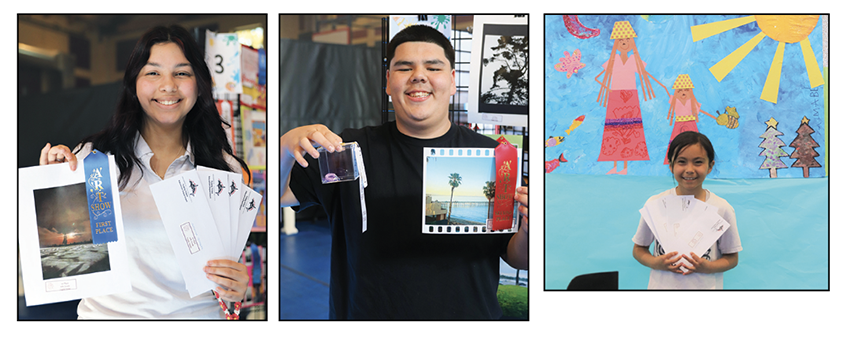
Such was the case with 9-year-old Tehya Robinson. She radiated pure joy while leading cousins and classmates to her five ribbon winning submissions. Then there was 13-year-old Gabe Joseph who beamed with pride as he posed for a picture with his 3rd place winning beaded earrings and 2nd place winning photograph.
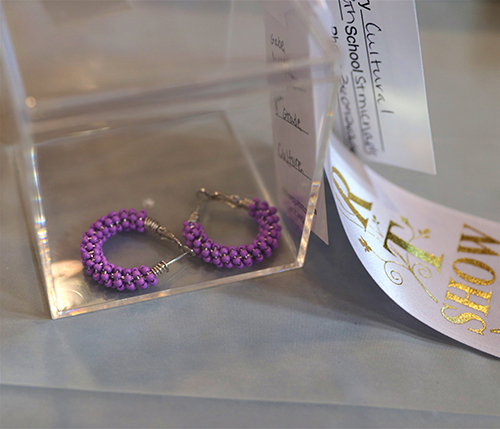
“The photograph I took was from a family vacation to California. I was standing on the balcony and thought the view was so cool that I needed to take a picture to remember it. The sun was just right and seeing the dock and palm trees just made me feel peaceful and relaxed,” shared the St. Michael’s 8th grader. “My aunt taught me to make beaded earrings and so I thought I’d make some purple ones to give to a friend’s mom. Now, she’ll be happy to know they are award winning earrings.”
Tehya, Gabe, and their fellow student culture bearers were able to win 1st, 2nd or 3rd place, plus honorable mention, in a variety of artistic mediums. Categories included culture, drawing, painting, writing, mixed media, sculpture, digital art, and pure heart. The top four from each grade and category received a ceremonial ribbon recognizing their talents and a monetary prize.

“It’s always amazing to see just how talented our Native students are. The new ideas and concepts they come up with every year continue to surprise us judges,” shared Festival judge Doug Salinas while admiring the middle school painting section. “I think every kid has the capability to be an artist because their imagination has no limits.”
Like in years past, this year’s Festival received hundreds of submissions, with the most popular category by far being painting. There were dozens of artists who showed off their diverse talents by submitting artwork in as many categories as they could. There are also artists who continue to evolve their artwork and challenge themselves each year to claim one of those coveted ribbons in different categories.
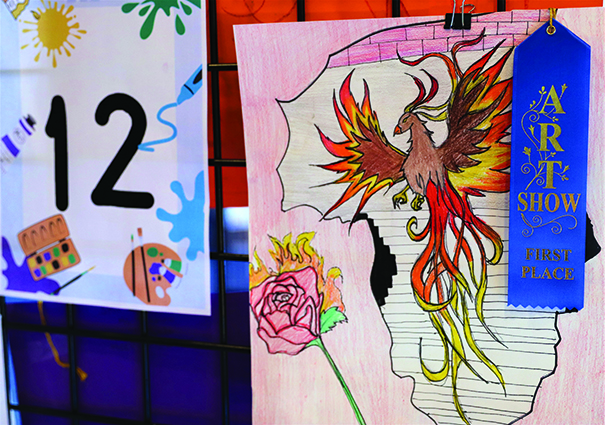
Tenth grader Catherine Velazquez is in the midst of quite the dynastic run, having won multiple ribbons since she first started participating in the Festival as an elementary-aged student. At 16-years-old now, she’s collected more ribbons than she can remember, but admits to looking forward to the Festival each year because of the opportunity to create new pieces and, yeah, collect some walking around money for her efforts.
“This past winter, I was at snow retreat in the mountains, it was night, the ground was completely covered in snow, and the moon casting this stunning red light. The moment was perfect for a picture. That photo won me 1st place this year,” said the Grace Academy 10th grader. She added ribbons from Digital Media, Mixed Media, Drawing, and Writing to her already large ribbon collection from past Festivals. “I love coming year each year and looking at all the art everyone does. Just walking around and admiring pieces that are my favorite inspires me to try new concepts and styles.”
This year’s art fest gala again offered several interactive tables, each led by an established adult artist. Representing possible career paths for the children to aspire to, or simply to have the young ones recognize art doesn’t have to stop when student life does. Tony Hatch, Tillie Jones, Ty Juvinel, and others did their best to engage Festival visitors and impart their cultural know-how through friendly, hands-on instruction.
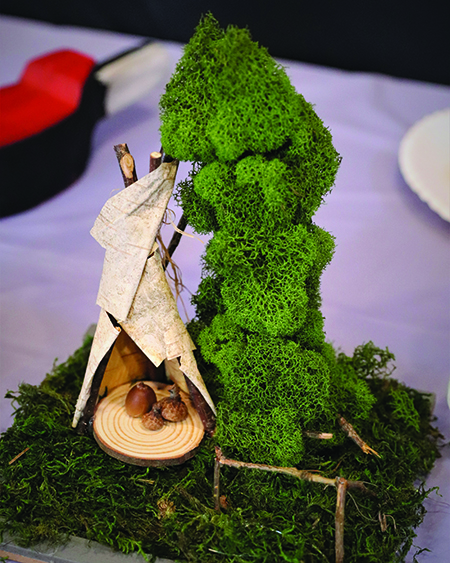
Pure heart icon Sean-Paul Mace was on-site with his very own table to display his LEGO Star Wars collection. He dazzled with his depths of dark side knowledge and could even tell you which cinematic scenes his figures could be found in.
Interwoven through many of the thought-provoking youth creations were both subtle and not so subtle tie-ins to ongoing social awareness campaigns, human rights issues and demands for a sustainable future. From artistic renditions on the Missing and Murdered Indigenous Women’s crisis, to declarations of Native-inspired rally cries like ‘Water Is Life’ and ‘Protect the Salmon’, to even rather imaginative way to represent heritage through a Fabergé egg.
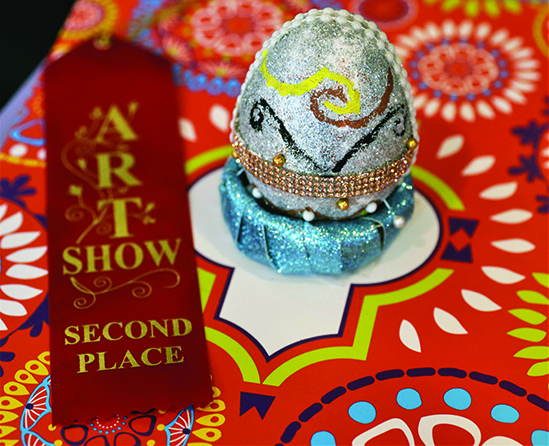
Fifth grader Lillianna Hope was gracious enough to break down the various elements of her heritage egg. “I chose copper as the equator line because is the closest color to yellow and yellow represents happiness. I chose to the eternal line because evil spirits will look at them and memorized by them and it will trap the evil spirit and it will stay in there forever. I did yellow dots because they represent happy memories. I chose the brown, yellow, and black swirls because I think it is pretty.”
Whether it was from reading written words or interpreting the depths of color and images on display from the inspiring artists, a message being conveyed loud and clear is that yes, in fact, the youngest among us are paying attention to current events and understand how their culture is viewed, both locally and nationally. More importantly, their art demonstrates they are capable of channeling their traditional teachings and spiritual strength into pure artistry.
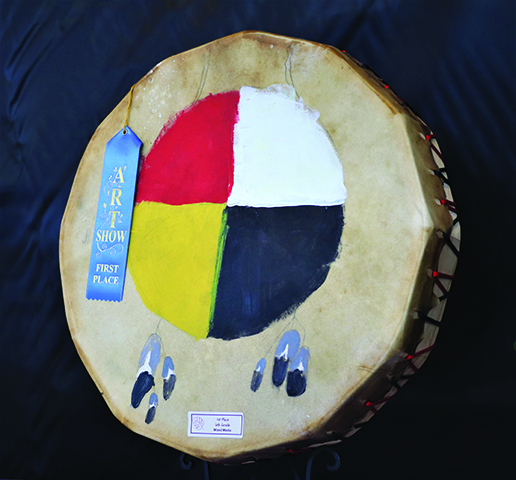
“When our kids create artwork for this event they are able to mix in elements of their personality, culture, family values, and what matters to them as individuals. It’s really incredible to see how even when there are twenty entries of the same type, each is different and unique in its own way because they reflect the artist who created it,” reflected Courtney Jefferson, Positive Youth Development Manager.
“Witnessing our kids get inspired from cultural pillars and advocacy movements is nice to see because that means they are learning about these foundational teachings while in school and retaining the information,” she added. “This proves how powerful it is to educate our people about our shared culture. Especially for the elementary-aged children. It’s so important they learn about the legacy of those who came before us and made it possible for us to thrive today.”
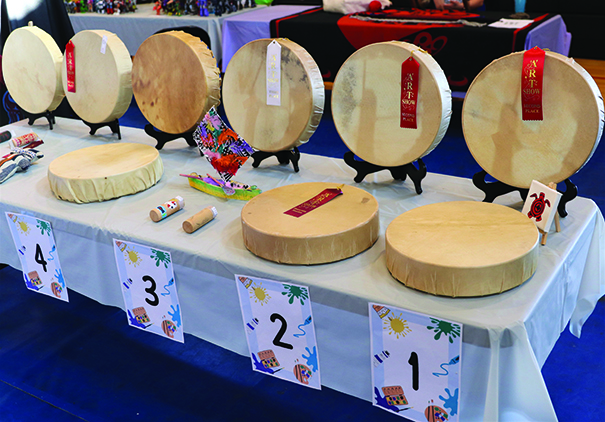
Without a doubt, the 2024 Native American Art Festival showcased a wide-range of artistic skills among our Tulalip youth. Confirming, yet again, what inspiring imaginations these artists are capable of creating when empowered to express themselves wholeheartedly and authentically, without judgement. Well, unless that judging comes with a shiny ribbon. Then it’s cool.
